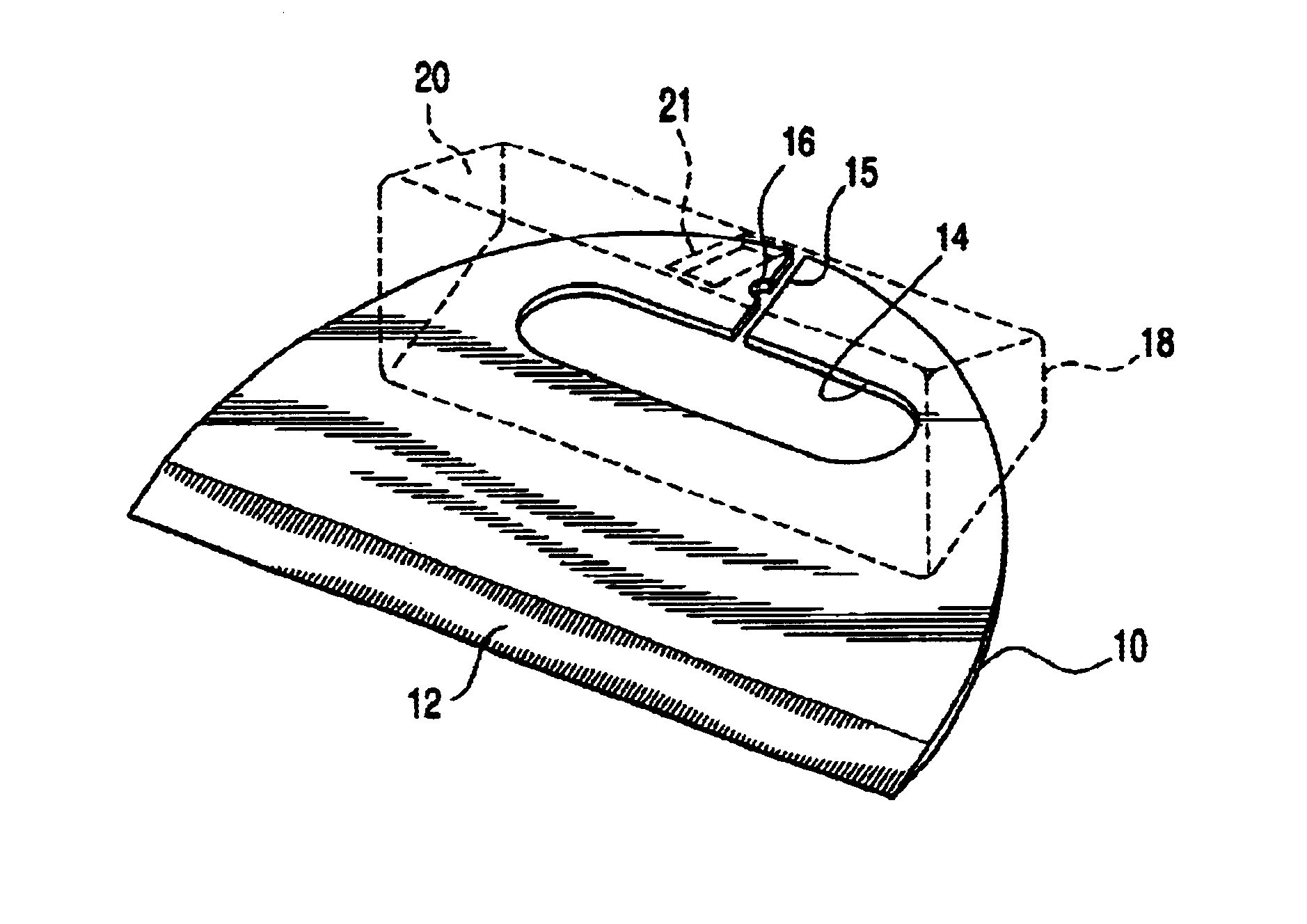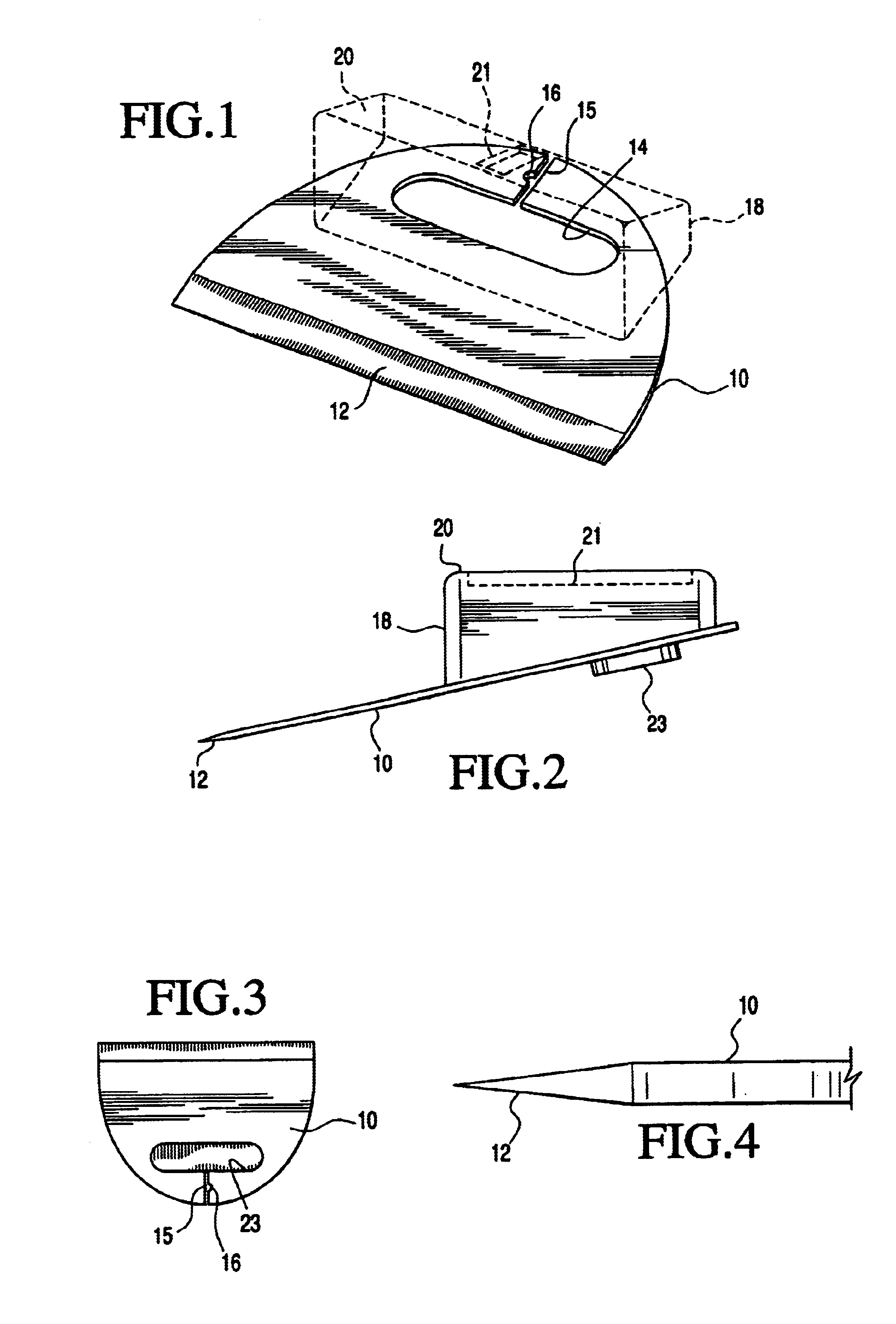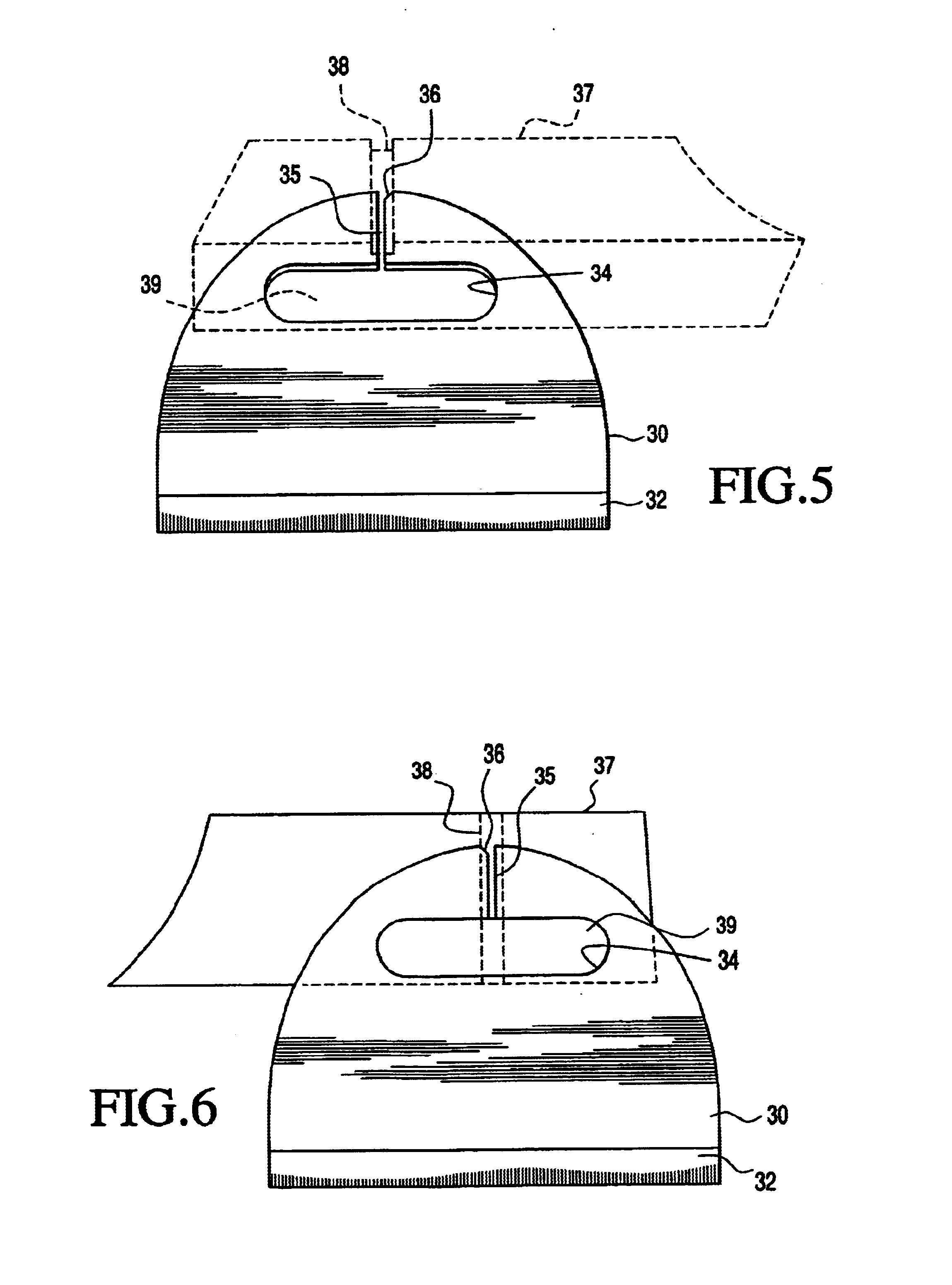Microkeratome blades and methods of making
a microkeratome and blade technology, applied in the field of blades and blade drive combinations, can solve the problems of not foreclosed on the adoption of features in the holder which improve the cutting function, and achieve the effect of simplifying the manufacturing process, local nonuniformities, and reducing the introduction of stress points
- Summary
- Abstract
- Description
- Claims
- Application Information
AI Technical Summary
Benefits of technology
Problems solved by technology
Method used
Image
Examples
Embodiment Construction
[0025]In the interest of brevity and simplicity, a detailed description is not provided herein of a microkeratome system with which the present invention may be used. Reference may be made to one of the above referenced patents for features of a typical microkeratome, bearing in mind that the Hellenkamp '009 patent on an arcuate path system is different in its drive mechanisms but still requires the precision and freedom from local nonuniformities and vibrating effects alluded to above. In FIGS. 1-3, the posterior boundary of a blade 10 is hemispherical in shape rearward of an anterior or leading cutting edge 12. The blade 10, which is of a surgical alloy, such as M-400 stainless steel, includes within its mid-region an ovoid aperture 14 that is open to the boundary through a small slot 15 in the blade 10 body. The slot 15 includes an indentation 16 which uniquely identifies the blade type. The holder 18, also called a driver, is a synthetic polymer element having a top surface 20 i...
PUM
 Login to View More
Login to View More Abstract
Description
Claims
Application Information
 Login to View More
Login to View More - R&D
- Intellectual Property
- Life Sciences
- Materials
- Tech Scout
- Unparalleled Data Quality
- Higher Quality Content
- 60% Fewer Hallucinations
Browse by: Latest US Patents, China's latest patents, Technical Efficacy Thesaurus, Application Domain, Technology Topic, Popular Technical Reports.
© 2025 PatSnap. All rights reserved.Legal|Privacy policy|Modern Slavery Act Transparency Statement|Sitemap|About US| Contact US: help@patsnap.com



